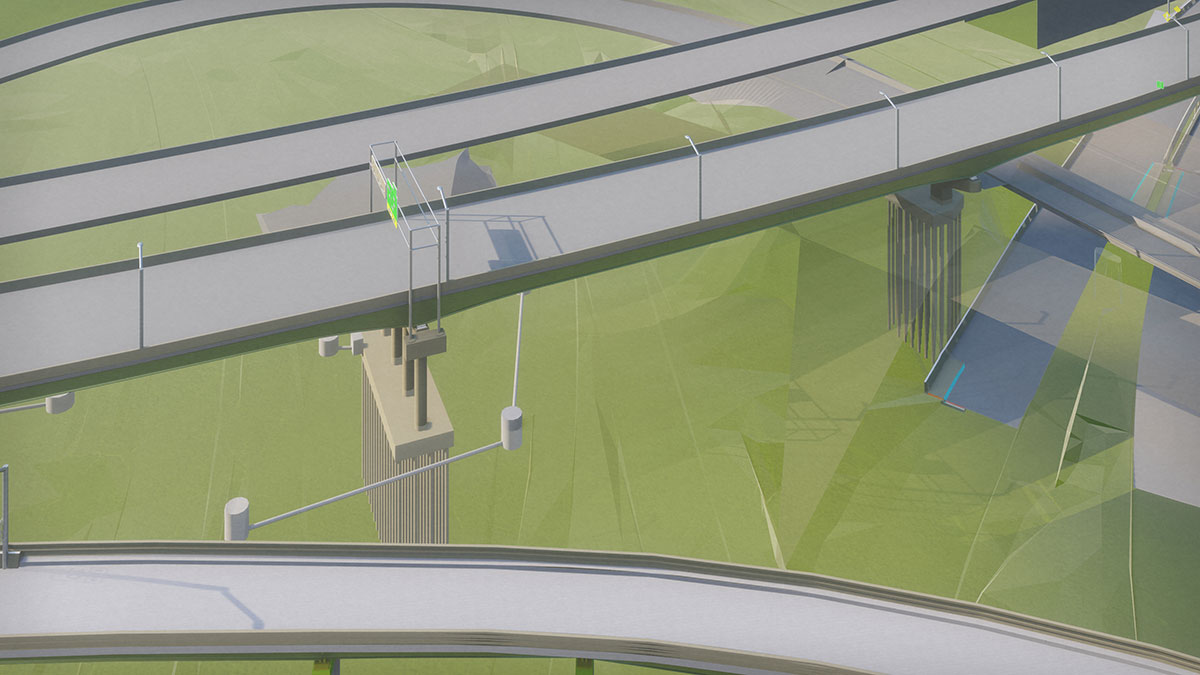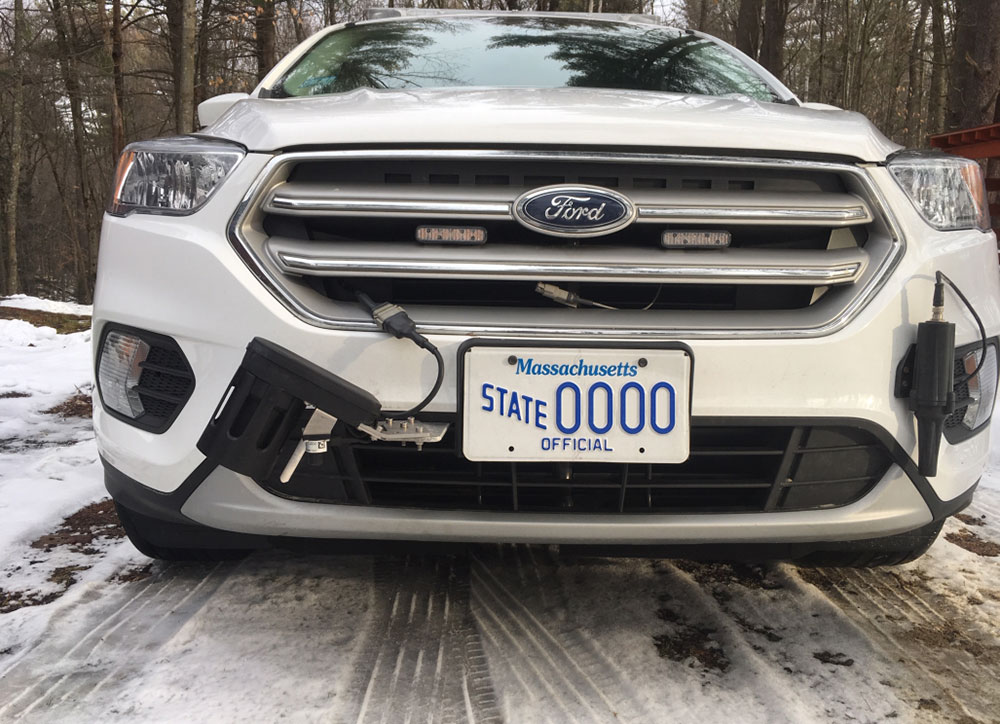November 4, 2021
Innovation of the Month: Digital As-Builts
Digital as-builts (DABs) are not the limited-value paper or image-based as-builts of the past. DABs are now becoming “project information models” for capturing all data created during design and construction that will enhance future business processes and decisions. DABs are construction’s contribution to a ‘digital twin’ where agencies can realize the power of integrating data collected throughout the lifecycle of an asset.
Transportation leaders, especially Chief Information Officers, understand the great value of the asset data currently lost, or not readily accessible, with existing data management practices. Transportation agencies in the U.S. and internationally and have begun implementing digital practices and data management approaches to better harness that data. DABs will give agencies the power to streamline project delivery and future work, automate tasks to reduce staff burdens, and perform analytics to support better decisions and system performance. Using virtual models and data means solving problems at the office before arriving at the project site and improving safety for both owner and contractor personnel.
In 2020, the Montana Department of Transportation (MDT) created a “Digital Delivery Initiative.” The Digital Delivery Initiative consists of the development and implementation of an intelligent 3D model-based process that gives engineering and construction professionals the insight to plan, design, construct, and manage projects more efficiently. The initiative integrates processes built on coordinated, reliable information and data about a project from design through construction, while also providing added value for operations and maintenance through a digital as-built.
The initiative leverages software tools to create 3D Models with integrated project intelligence. MDT believes the process will revolutionize the way design teams interact by uniting the design and plan set development processes. MDT’s initiative also allows for agile preconstruction design and construction through real time virtual collaboration. This results in better built projects, saving time and resources by shortening layout and design time while improving the quality of delivered plan sets with digital model intelligence.

Digital as-builts provide comprehensive, 3D views of project designs, enabling agencies to identify potential issues before they appear during construction. (Source: NYSDOT)
By implementing the Digital Delivery Initiative, MDT has seen more efficient and effective design workflows for project delivery, resulting in streamlined construction processes. Additionally, the initiative has improved how MDT communicates comprehensive project purpose and goals with the public, allowing for a better visualization of the project and facilitating equitable solutions with community stakeholders. Finally, the initiative has created a more effective method for communicating design intent to Montana contractors which will result in cost and time savings on infrastructure projects.
Watch the e-Ticketing and Digital As-Builts EDC Spotlight video here. To learn more about DABs, please join the team’s e-newsletter or contact David Unkefer, FHWA Resource Center.
Caltrans Saves $40 Million with Project Bundling
Project bundling is a proven practice that draws upon efficiencies found through project delivery streamlining and alternative contracting methods. A bundled contract may cover a corridor, a single county, district, or the State and may be used for a variety of work.
The California Department of Transportation (Caltrans) bundles projects that involve similar scopes of work. During fiscal year 2020, Caltrans bundled 30 construction projects into 14 contracts that cumulatively trimmed about $40.2 million in costs. These bundles included pavement rehabilitation, shoulder widening, bridge replacements, curve improvements, rockfall drapery systems, culvert rehabilitation, and safety projects.
Project bundling is listed as one of about two dozen efficiencies highlighted in Caltrans’ annual SB 1 Efficiencies Report. SB 1 is the Road Repair and Accountability Act of 2017, a California transportation funding law that requires Caltrans to become more efficient with taxpayer funds it spends and find ways to save at least $100 million each year.
To learn more, check out these FHWA project bundling resources or contact Romeo Garcia or David Unkefer, project bundling team co-leads.
Road Weather Sensors Leads to Reductions in Salt Use and Environmental Impacts across Massachusetts
Understanding road conditions before, during, and after winter weather events is critical for roadway safety and mobility. Massachusetts DOT (MassDOT) received a State Transportation Innovation Council (STIC) grant to purchase mobile road weather information stations (MARWIS) for fleet vehicles to help improve situational awareness of the road network.
The sensors determine road condition, height of ice, water, or snow, grip level, air temperature, relative humidity, dew point, frost point, and road temperature. The information is collected through a mobile application and transmitted to supervisors and the office in real-time. This is critical as these supervisors make final decisions on road treatment.

MassDOT fleet vehicle with installed sensor (Credit: MassDOT)
The mobile sensors have provided significant improvements in MassDOT’s salt use. When assessing predicted salt application versus actual last winter season, MassDOT only used 86 percent of its predicted salt amount. This resulted in approximately 18,000 fewer tons of salt used with a cost savings of over $900,000. In addition, this reduction also leads to significant reductions in environmental impacts from salt application.
To learn more about MassDOT’s mobile RWIS efforts, contact Mark Goldstein with MassDOT. For additional weather-responsive management strategies information and publications, contact David Johnson, FHWA Office of Operations.
Crash Responder Safety Week: An Opportunity to Promote Roadway and Traffic Incident Responder Safety
Traffic incident responders work roadside to restore safe travel after crashes, stalled vehicles, roadway debris, and other incidents. Nearly every week, a traffic incident responder is killed while clearing a roadway incident; many more sustain life-changing injuries. These secondary crashes place a high toll on response communities and endanger road users. Crash Responder Safety Week (CRSW) is an opportunity to spotlight safe strategies responder communities and travelers can apply around traffic incidents. This year, CRSW takes place November 8-14, 2021. State and local responder communities as well as national associations are marking CRSW with Governor’s Proclamations, press releases, mass responder training events, changeable message signs, social media messages, public events, local television interviews, and other outreach strategies.
To learn how your agency can use CRSW to promote road safety, visit the FHWA CRSW Campaign Toolkit and the National Operations Center of Excellence (NOCoE) CRSW site. For questions regarding CRSW, contact Jim Austrich, the FHWA Next Generation TIM co-lead.
Discover Home-Grown Innovations from Around the Country

The National STIC Network Showcase prominently features several innovations focused on e-Construction and digital delivery. Learn about Utah DOT's digital delivery with model-based design and construction, which used an AID Demonstration grant to advance digital delivery and is working to create a repeatable process using digital models through the road construction lifecycle; and Florida DOT's digital delivery streamline, which devised a method to avoid re-signing and sealing sheets produced during the early stages of production, resulting in estimated savings of over $300,000 per year.
About EDC
Every Day Counts, a state-based initiative of the Federal Highway Administration's Center for Accelerating Innovation, works with state, local and private sector partners to encourage the adoption of proven technologies and innovations to shorten and enhance project delivery.
EDC News is published weekly by the FHWA Center for Accelerating Innovation.
Notice: The U.S. Government does not endorse products or manufacturers. Trademarks or manufacturers’ names appear in this presentation only because they are considered essential to the objective of the presentation. They are included for informational purposes only and are not intended to reflect a preference, approval, or endorsement of any one product or entity.
Recommended Citation:
U.S. Department of Transportation, Federal Highway Administration Every Day Counts: Innovation for a Nation on the Move
EDC News: November 4, 2021
Washington, DC:
https://doi.org/10.21949/1521817


